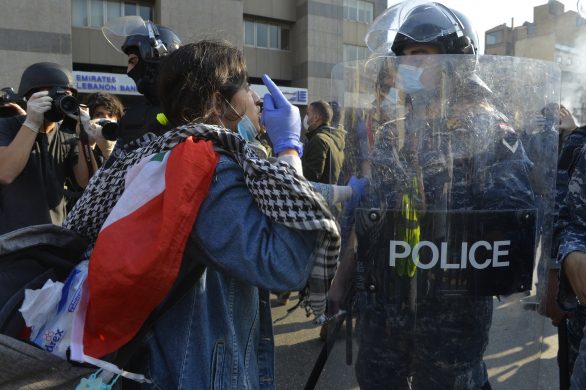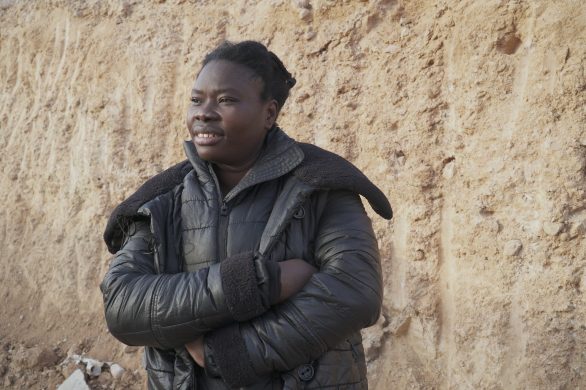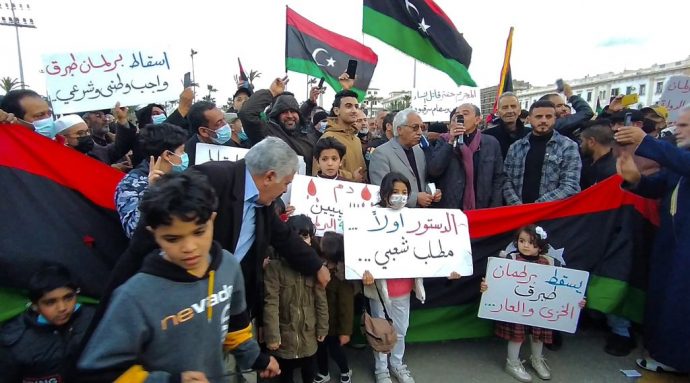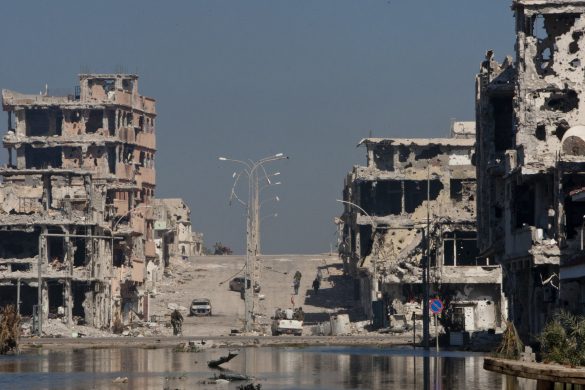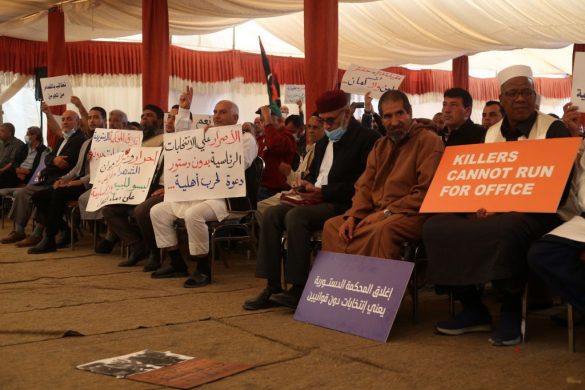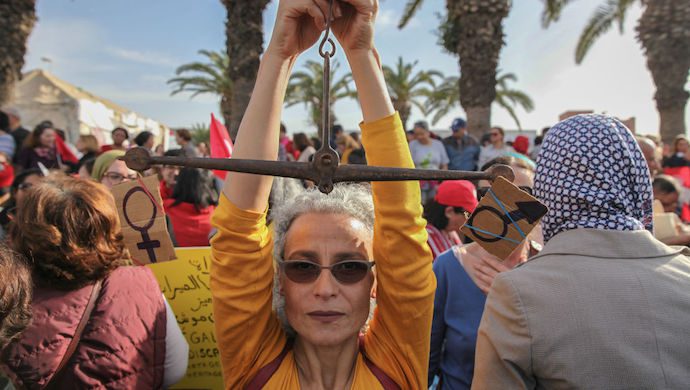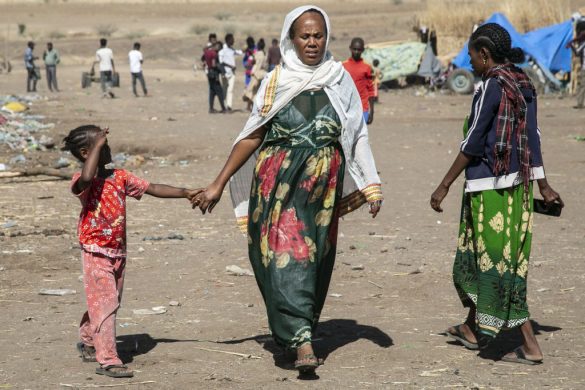Human Rights Watch har fundet tegn på, at de forbudte klyngebomber er blevet anvendt i mindst to tilfælde i Libyen i de seneste uger. Landets regering afviser, at dens styrker bruger klyngebomber.
(Beirut) – There is credible evidence of the use of banned cluster bombs in at least two locations in Libya since December 2014.
Phone interviews with witnesses and photographic evidence reviewed by Human Rights Watch indicate that remnants of RBK-250 PTAB 2.5M cluster bombs were found at Bin Jawad in February 2015 and at Sirte in March.
The good condition of the paint on the bomb casings and lack of extensive weathering indicated that the remnants had not been exposed to the environment for long and were from a recent attack.
The Libyan Air Force recently bombed both locations, but denied using cluster munitions.
It is not possible to determine responsibility on the basis of available evidence.
“The new evidence of cluster munitions use in Libya is highly disturbing,” said Steve Goose, arms director at Human Rights Watch and chair of the Cluster Munition Coalition.
“Libyan authorities should investigate these incidents and make sure its forces don’t use cluster munitions.”
Deny the use of cluster bombs
Hostilities since May 2014 have left Libya with rival governments: an internationally recognized government based in the east, and a self-proclaimed government in Tripoli backed by an alliance of militias known as Libya Dawn that controls much of western Libya.
Both claim legitimacy as the sole political authority, but neither has been able to exert full control nationally.
On March 11, Human Rights Watch spoke by phone with Brig. Gen. Saqr al-Jerroushi, commander of the Libyan Air Force of the internationally recognized government.
Brig. Gen. Al-Jerroushi acknowledged that his forces had carried out air strikes in February and March in Ben Jawad and Sirte as well as in Watiya, among other locations, but denied that forces under his command used cluster bombs in any of the reported air strike locations.
Al-Jerroushi said the Air Force had no access to cluster bombs.
“While the airstrikes continue every day against militias, the Libyan Army has access to only traditional, heavy munitions such as what was used during the Second World War,” he said.
“We have no cluster munitions.”
Since May 2014, forces affiliated with the internationally recognized government based in eastern Libya and under the command of Gen. Khalifa Hiftar have been engaged in a military operation against Libya Dawn.
Hiftar’s operation, known as Libya Dignity, involves former members of the military, tribal factions, and militias from the mountain town of Zintan.
Libya Dawn is led by forces from Misrata and includes militias from Tripoli, Zawiyah, Sebratha, and elsewhere.
Civilians at risk of death
The use of cluster munitions in populated areas, such as Sirte, violates the laws of war due to the indiscriminate nature of the weapon.
Cluster munitions contain dozens or hundreds of smaller munitions, called submunitions or bomblets, in a container such as a rocket or a bomb.
After launch, the container opens up, dispersing submunitions designed to explode when they hit the ground.
The submunitions spread indiscriminately over a wide area, often the size of a football field, putting anyone in the area at the time, whether combatants or civilians, at risk of death or injury.
Many submunitions do not explode on impact, but remain armed, becoming de facto landmines.
Any location contaminated with dud submunitions remains hazardous until cleared by trained explosive ordnance disposal personnel.






